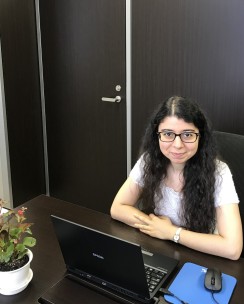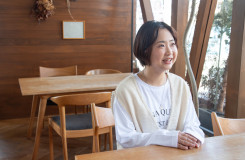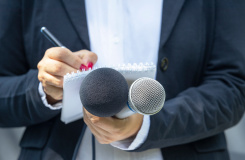
- 記事一覧
- ゲストライター記事一覧
- How does having immigrant parents affect the outcomes of children in Japan? 日本において、移民の両親を持つことは、子供たちにどのように影響するか?
How does having immigrant parents affect the outcomes of children in Japan? 日本において、移民の両親を持つことは、子供たちにどのように影響するか?

日本語訳は英文の後に掲載しています。
For inclusive societies, promoting upward mobility and ensuring equitable opportunities are essential policy goals. Immigrants and their children are a group that needs special attention in this context since they encounter several disadvantages and are a vital and growing part of society almost everywhere (OECD, 2017). Raising children in a migration context that is different from the context of their own upbringing includes difficulties that are distinct from those faced by parents in the majority in that context. While how immigrant parents identify their migration and integration experiences differ depending on the setting, parenting in migration situations undergo certain adjustments that result in a number of obstacles (Attaallah, 2019).
According to the Ministry of Justice, in 2020, the number of registered migrants aged 0-18 was 427,72, making up around 14.5% of all migrants who were officially registered in Japan (Prasad & Tabata, 2021). However, this statistic excludes immigrant children with Japanese nationalities who are naturalized or have a Japanese parent and a foreign national parent, a group often invisible (Tokunaga, 2018). Therefore, it is estimated that there may be more than 428,582 immigrant children of Japanese nationality under the age of 19 (Enoi, 2017). There are several problems that children with migration background experience in Japan. The problems that these children face in Japan can be summarized as follows:
「Absence of legislation that requires migrant children to attend school」
In many municipalities, there is a lack of cooperation between local governments and immigrant families to enroll immigrant children in schools. With the majority of local government, notices sent to immigrant families to inform them that their children will begin attending elementary school are written only in Japanese. For some local governments, sending such documents to immigrant families is not even an effort. The lack of law requiring immigrant children to attend school is one reason why most local governments have a neutral stance on immigrant children’s education (Asahi Shimbun, 2019a). Due to the central government’s policy of only requiring compulsory school attendance for Japanese citizens, many local governments have failed to monitor the enrolment of immigrant students (Japan Times, 2016).
「Rejection of enrolment of migrant children in public schools」
According to a 2018 Kanto Federation of Bar Associations survey, despite an increase in the number of immigrants living in Japan, at least ten local governments have rejected the enrollment of immigrant children into public elementary and junior high schools. Fifty-two local governments, or 18.8%, responded that they had not been able to provide language instruction to immigrant students in response to a survey question on respondents’ perceptions of Japanese language education in public elementary and junior high schools. Only 68 local organizations, or 24.5%, reported being equipped to handle language education. However, 145 governments, or 52.3%, indicated they were working on it even if “it cannot be regarded to be satisfactory.” (Mainichi Shimbun, 2021).
「Insufficient Japanese language education and language support at schools」
The Ministry of Education’s survey (2016) indicated that about 10,400 students attending public elementary, junior high, senior high, and special needs schools nationwide who needed Japanese language education did not receive such support. According to the survey, 43,947 students in 8,396 public schools required Japanese language education. Among these, 33,547 children received assistance from teachers specially assigned for this purpose, part-time instructors, or volunteers (Mainichi Shimbun, 2019). Furthermore, the high school enrollment rate of students who need Japanese language instruction is nearly 10% lower than that of all junior high school students, and their high school dropout rate tends to be high. Therefore, it is crucial to provide thorough assistance at elementary and junior high schools so that students can acquire Japanese language skills according to their stage of development (Yomiuri Shimbun, 2022).
「High ratio of enrolment in special-needs classes for language reasons」
The Ministry of Education conducted a nationwide survey on children who were enrolled in special-needs classes at public elementary and junior high schools. The survey indicated that of the 52,922 children who needed assistance studying Japanese, 2,704 children were enrolled in special-needs classes. The ratio was 5.1%, higher than 3.6% among all children enrolled in public elementary and junior high schools (Mainichi Shimbun, 2022).
「High ratio of non-attendance and school dropout」
Up to 20,000 children of foreign nationality may not be enrolled in school in Japan despite being eligible, according to the first government research on school attendance (Asahi Shimbun, 2019b). Additionally, some children and their parents might not have sufficient competency in the Japanese language to explain their absence. Local governments’ support also varies, with many merely sending notifications about enrolment in Japanese (Kyodo News, 2020).
「Poverty」
Many children of foreign nationality permanently reside in Japan, and the number of immigrant children without formal education is rising. It could cause social instability if it is not addressed. For instance, many local governments enroll immigrant children in public schools when applications are received. Some parents, however, choose not to enroll their children at school due to economic or other reasons. Additionally, that may have a negative impact on their future and result in a cycle of poverty among Japan’s immigrant population (Japan Times, 2016).
What is the critical issue?
The so-called egalitarian and homogenous educational system in Japan has not miraculously impacted the educational experiences of immigrant students. Since Japanese schools started to admit students from various backgrounds, Japan has experienced the same educational challenges associated with immigrants as in other countries. According to a review of immigrant children in Japan (Yamamoto, 2013), immigrant children from a variety of cultural and linguistic backgrounds are likely to have academic challenges due to Japan’s centrally controlled educational system, homogeneous curricula, and teaching methods. A significant disparity between Japanese and immigrant students shows that Japanese and foreign-national students have different educational opportunities. It is believed that the fundamental issues are associated with the legal system, social environment, and educational system that label immigrant children as “gaijin” (foreigners), whose attendance at school is not required as it is for Japanese nationals. “Gaijin” status, which marginalizes immigrants, can have an impact on how Japanese students interact with immigrant students and make it more difficult for them to succeed in school. Such a marginal status is likely to draw a line between Japanese and non-Japanese, expect immigrants to assimilate, and lead to prejudice and discrimination toward immigrant students. Immigrant students report being teased or bullied—an experience common at Japanese schools. The unique cultural and linguistic backgrounds of immigrant children present additional challenges to their academic progress in an egalitarian-oriented educational system that disregards the variety of needs associated with students’ origins (Yamamoto, 2013).
Although the central government and local governments should take responsibility for tracking immigrant children’s school enrollment and integration into the culture, there is a disparity between responsibility and action. Moreover, since local governments do not always convey sufficient information (in required languages) and provide essential support to immigrant parents, these parents encounter various challenges while raising their children in a different society.
Therefore, there is a need to support immigrants and their children to create an inclusive society. Assisting those parents in gaining awareness of the social and educational structure, supporting them to access information about procedures such as enrolling their children in school, and providing them and their children with language instruction are essential to facilitate the integration of parents and their children to Japanese society.
包摂的な社会を目指すうえで、社会的流動性を促進し、公平な機会を確保することは、不可欠な政策目標です。この点において、特に移民とその子どもたちは、注視するべき存在です。なぜなら、彼らはホスト国で様々な困難に直面する一方で、世界中の多くの社会において、移民やその子孫は重要な役割を担っているからです。自分の育った地域や文化とは異なる移住の地で子どもを育てることは、そのホスト国で多数派(マジョリティー)の人々が子育てをする際とはまた異なる困難をはらみます。それぞれの移民が自身の社会的統合の経験をどのように認識するかは、それぞれが置かれている状況によって異なりますが、移民として子育てすることは、一定の変容を求められ、多くの課題を伴うと言えます(Attaallah, 2019)。
法務省によると、2020年時点において、日本における0~18歳の移民登録者(在留資格を持つ在日外国人)数は42,772人であり、移民全体の約14.5%を占めています(Prasad & Tabata, 2021)。ただし、この統計には、帰化した日本国籍の移民子女や、日本人の親と外国人の親を持つ移民子女といった、日本社会において不可視化された子どもたちの数は含まれていません(徳永, 2018)。したがって、19歳未満の日本国籍の移民の子どもは、428,582人以上いるのではないかと推測されます(榎井, 2017)。移民1世・2世などの子どもたちが日本で経験する問題はいくつかありますが、これらをまとめると、次のようになります。
「移民の子どもは就学義務の「対象外」」
多くの自治体では、移民の子どもたちの就学における、自治体と移民家庭の協力体制が整っていません。移民家庭に向けて、子どもが小学校に通い始めることを知らせる通知が送られる場合、大半は日本語のみで書かれています。また、自治体によっては、そのような通知を移民家庭に送ること自体がなされていないところもあります。多くの自治体が、移民の子どもたちの就学において、このような非積極的な立場である背景として、移民(在日外国人)の子どもに就学を義務づける法律がないことも指摘されています(朝日新聞社、2019a)。日本国民にのみ義務教育を課すという日本政府の方針により、多くの地方自治体は移民の児童・生徒の就学状況を把握できていません(ジャパンタイムズ、2016年)。
「移民の子どもの公立学校への入学拒否」
2018年に実施された関東弁護士会連合会の調査によると、日本に住む移民の数が増えているにもかかわらず、少なくとも10の自治体が、移民の子どもの公立小中学校への入学を拒否していることがわかりました。また、「公立小中学校での日本語教育に対する意識調査」の質問に対して、「移民の児童生徒への語学指導が出来ていない」と回答した自治体は、あわせて52市町村(18.8%)でした。また、「語学教育に対応できる体制が整っている」と回答した地方自治体は68市町村(24.5%)にとどまりました。一方で、"満足とは言えないが取り組んでいる "と回答した自治体は145市町村(52.3%)にのぼりました。(毎日新聞、2021年)。
「学校における不十分な日本語教育・言語支援」
文部科学省の調査(2016年)によると、日本語教育が必要とされながら言語支援を受けていない児童・生徒数が、全国の公立小・中・高・特別支援学校において、約10,400人にのぼることが明らかになりました。同調査によると、日本語教育が必要な児童・生徒は、全国の公立学校8,396校に43,947名在籍しています。このうち、日本語教師や非常勤教員、ボランティアなどからなんらかの支援を受けている児童・生徒は3万3547名でした(毎日新聞、2019年)。さらに、日本語指導が必要な生徒の高校進学率は、全国平均より10%近く低く、高校中退率も高い傾向にあります。小中学校において切れ目のない日本語教育を提供し、移民の子どもたちの発達段階に応じた日本語の習得を促す環境を整えることが重要です(読売新聞、2022年)。
「特別支援学級に在籍する移民の子どもたち」
文部科学省は、全国の公立小中学校の特別支援学級に在籍する子どもたちを対象にした調査も実施していますが、その結果、日本語学習に支援が必要とされる児童・生徒52,922人のうち、2,704人が特別支援学級に在籍していることがわかりました。その割合は5.1%で、全国平均の3.6%を上回っています(毎日新聞、2022年)。
「高い不登校率」
政府による外国籍の子どもの就学状況についての初めての調査において、こうした子どもたちのうち、日本で就学資格があるにもかかわらず、通学していない子どもの数が、最大で2万人にのぼる可能性があることが明らかになりました(朝日新聞社、2019b)。こうした子どもたちやその保護者は、なぜ欠席しているのかについて説明するための日本語能力が十分でない場合もあります。自治体の支援もさまざまで、多くは日本語の就学通知書を送るだけでになっています(共同通信社、2020年)。
「貧困」
日本には多くの外国籍の子どもたちが永住していますが、彼らの中には義務教育を受けていない者も少なくありません。このままでは、格差の拡大など、社会の不安定化につながりかねません。多くの自治体では、移民の子どもたちの就学届が受理され、公立学校に入学しています。しかし、中には経済的な理由などから、子どもを学校に入学させないという選択をする親もいます。こうした選択は、子どもたちの将来に悪影響を及ぼし、日本社会における移民人口の間で貧困の連鎖につながる可能性があります(Japan Times, 2016)。
何が重大な問題なのか?
日本のいわゆる“平等主義的”で均質な教育システムは、移民の児童・生徒にとって必ずしも利益を伴うものではありません。日本の学校が様々な背景を持つ児童・生徒を受け入れるようになってから、他の国と同じように、日本でも移民の子どもたちの教育問題が見受けられるようになりました。山本(2013年)によると、さまざまな文化的・言語的背景を持つ移民の子どもたちは、日本の中央集権的な教育システムや均質なカリキュラム・教育方法のため、学業上の課題を抱える可能性が高いといいます。こうした日本人と移民の児童・生徒の間にみられる大きな格差は、後者の教育的機会は前者とそれと同等ではないことを示しています。その根本にあると考えられるのが、移民の子どもは、法制度、社会環境、教育制度によって"外人"というレッテルを貼られ、結果として日本人のように就学を義務づけられていない、ということです。移民を疎外する "外人"というステータスは、日本人児童・生徒がどのように移民児童・生徒に接するかに影響を与え、移民の子どもたちの学校生活への適応をより困難にする可能性があります。さらにこの“外人”ステータスは、日本人と外国人の間に一線を引き、後者に対して同化を求め、結果として彼らに対する偏見や差別につながりえます。実際、日本の学校では、移民の児童・生徒がからかわれたり、いじめられたりするケースがよくあるといわれています。移民の子どもたちの文化的・言語的背景から生じる多様な学業上のニーズは、“平等主義的”な日本の教育システムにおいては無視されやすく、彼らの多様なバックグランドは現状では「問題」となってしまっているといえます(山本、2013)。
移民の子どもたちの就学状況やホスト文化への統合状況の把握は、国や地方自治体の責任である一方、「責任」の所在を認識することは必ずしも「行動」につながらない現状があります。特に、地方自治体が移民の保護者に必要な情報を(多言語で)十分に伝え、必要な支援を行っているとは限らないため、移民の保護者は日本という異国の地で子どもを育てる中で様々な困難に遭遇してるといえます。
そのため、移民とその子どもを支援し、インクルーシブな社会を実現することが求められています。特に、子育てをする移民が日本社会における社会・教育システムがどういうものかを理解し、子どもの入学手続きなどに関する情報が周知され、移民の親子が日本語習得の機会を得られるように支援をすることは、彼らの日本社会への統合において必要不可欠です。
References
Asahi Shimbun (2019a). Foreign children in Japan need more support to get an education. Retrieved from http://www.asahi.com/ajw/articles/AJ201910040025.html
Asahi Shimbun (2019b). 20,000 foreign children slip through net, not going to school. Retrieved from https://www.asahi.com/ajw/articles/13059148
Attaallah, I. M. (2019). Understanding parenting challenges in a migration context: A qualitative study on Arabic-speaking immigrant parents’ experiences of raising their children while integrating in Sweden. Master’s Thesis in Master’s Programme in Child Studies.
Enoi, Y. 2017. “Gaikokujinto gaikokuni tsunagaru kodomono ima: Sono samazamana sugata [Current situation of children with foreign roots: Diverse reality].” In Gaikokujinno kodomo hakusho: Kenri, hinkon, kyoiku, bunka, kokusekito kyoseino shitenkara [White paper on foreign children: Perspectives of rights, poverty, education, culture, nationality, and co-existence], edited by S. Aramaki, Y. Enoi, H. Ehara, Y. Kojima, K. Shimizu, N. Minamino, T. Miyajima, and R. Yamano, 21-24. Tokyo: Akashi Shoten.
※榎井縁「外国人と外国につながる子どもたちのいま」, 荒牧重人, 榎井縁, 江原裕美, 小島祥美, 志水宏吉, 南野奈津子, 宮島喬, 山野良一(編)『外国人の子ども白書:権利・貧困・教育・文化・国籍と共生の視点から』(pp. 21-24), 明石書店, 2017年.
Japan Times (2016). Non-Japanese kids face cycle of poverty if municipalities fail to track, deter truancy: survey. Retrieved from https://www.japantimes.co.jp/news/2016/02/26/national/social-issues/non-japanese-kids-face-cycle-poverty-municipalities-fail-track-deter-truancy-survey/#.XtimcWj7Q2w
Kyodo News (2020). Japan to double language support budget for foreign children. Retrieved from https://english.kyodonews.net/news/2020/09/aff46b0cf407-japan-to-double-language-support-budget-for-foreign-children.html
Mainichi Shimbun (2019). 10,400 foreign kids lack Japanese language education amid instructor shortfall. Retrieved from https://mainichi.jp/english/articles/20190506/p2a/00m/0na/016000c
Mainichi Shimbun (2021). 10 local Japan gov’ts rejected enrollment of foreign children at schools: survey. Retrieved from https://mainichi.jp/english/articles/20210820/p2a/00m/0na/029000c
Mainichi Shimbun (2022). Many foreign children in Japan enrolled in special-needs classes for ‘language’ reasons. Retrieved from https://mainichi.jp/english/articles/20220412/p2a/00m/0na/006000c
OECD (2017). How does having immigrant parents affect the outcomes of children in Europe? Migration Policy Debates, 1-5.
Prasad, J. R. D. & Tabata, S. (2021). Barriers to education for migrant children in Japan at mainstream schools: From a rights-based perspective. Journal of Human Security Studies, 10(2), 109-129. https://doi.org/10.34517/jahss.10.2_109
Tokunaga, T. (2018). Possibilities and constraints of immigrant students in the Japanese educational system. 2019 Global Education Monitoring Report, 1-16.
Yamamoto, Y. (2013). Immigrant families and children’s schooling in Japan: Trends, challenges, and implications. In R. Dimitrova, M. Bender, and F. J. R. van de Vijver (eds.), Global Perspectives on Well-Being in Immigrant Families (pp. 55-74). Springer Social Sciences, NY.
Yomiuri Shimbun (2022). Expand framework to support Japanese language education. Retrieved from https://japannews.yomiuri.co.jp/editorial/yomiuri-editorial/20220415-20612/

トルコ出身。中東工科大学(心理学科)という国立の技術系大学を卒業後、同大学修士課程へ入学(社会心理学科)、テラー・マネジメント理論の文化的世界観・死の顕現化仮説に関する研究を行う。心理学科ではリサーチアシスタントも務める。アンカラ大学修士課程卒業後、文部科学省奨学金で岡山大学社会文化科学研究科(社会心理学科)へ。博士課程に進み、在留トルコ人留学生のアカデミックカルチャーショック・異文化適応に関する研究を行う。
2020年4月~橋本財団ソシエタス総合研究所の研究員として勤務。
トルコ出身。中東工科大学(心理学科)という国立の技術系大学を卒業後、同大学修士課程へ入学(社会心理学科)、テラー・マネジメント理論の文化的世界観・死の顕現化仮説に関する研究を行う。心理学科ではリサーチアシスタントも務める。アンカラ大学修士課程卒業後、文部科学省奨学金で岡山大学社会文化科学研究科(社会心理学科)へ。博士課程に進み、在留トルコ人留学生のアカデミックカルチャーショック・異文化適応に関する研究を行う。
2020年4月~橋本財団ソシエタス総合研究所の研究員として勤務。
Recently Popular最近よく読まれている記事
-

食べていても痩せる 高齢者終末期のカヘキシア(悪液質)
食べていても痩せる。活発に運動を続けている人なら不思議に思わないが、介護度の高い高齢者にそのようなことが果たして起こるのだろうか。起こるのであれば、それはカヘキシアという病態であれば説明できる。 カヘキシア(悪液質)カヘキシアとは、食欲不振・体重減少・全身衰弱・倦怠感などを呈し、生命予後やQOL(qualit… -

終末期の自然な経過を見極めるとは
長期に渡り胃ろうからの栄養を続けていると、注入した物が食道へ逆流したり、唾液や痰の貯留が増えたりして、吸引を繰り返すことになるが、結局のところ、頻回の吸引も間に合わず、心肺停止状態で発見されることが多い。これでは看取りとは言えない。ここに至るまでの言葉を語れない人の苦しみ。このような事態を避ける智慧… -

自閉症スペクトラムと呼ばれているような障害は、実は障害ではない。生物としての人類のバリエーション(変異)の一つである。
自閉症スペクトラムと呼ばれているような障害は、実は障害ではない。生物としての人類のバリエーション(変異)の一つである。本来は人類の、生息環境に対する適応の一つのあり方だというのが、ニューロダイバーシテイ(脳多様性)という考え方に他ならない(詳しくは正高信男著『ニューロダイバーシテイと発達障害』(北大… -

社会保障分野での普遍主義と選別主義について
介護保険や医療保険では、貧富にかかわらず保険によって9割が給付(自己負担は1割)あるいは、7割が給付(自己負担は3割)される。この様な社会保障の方式は、「普遍主義」といわれている。「普遍主義」は、義務教育や、最近では高等学校の授業料にも適応されている(この場合も裕福な人も貧しい人も同様に無償である)。反… -

飲まず食わず(自発的飲食中止)という選択、VSEDをご存知ですか?
前回(Opinionsで9月24日配信記事)は有馬斉氏による安楽死の分類と、我が国の現状についてお伝えしました。また我が国においては、医師の致死的薬剤の処方による積極的安楽死は、法的に支持されていないということもお話ししました。諸外国では医師による致死的薬剤処方による安楽死が認められている国もありますが、もち… -

医療崩壊
ある日の外来。朝の9時から診察室に座りっぱなしでそろそろ3時間が経過。既に再診患だけではなく、その日の新患も回ってきます。で、そうした中に問題のおじさんがいました。「今、○○クリニックで薬をもらっていまして・・・」「30日分貰っているのですが、お腹が痛くなったので、診てもらいに来ました」「○○先生の紹介…
Writer ライター
-
 受賞作品Opinionsエッセイ
受賞作品OpinionsエッセイOpinionsエッセイの記事を見る
-
 ペンネーム東沖 和季
ペンネーム東沖 和季東沖 和季の記事を見る
-
 ニセコ在住下田 伸一
ニセコ在住下田 伸一下田 伸一の記事を見る
-
 ペンネーム 看護師宇梶 正
ペンネーム 看護師宇梶 正宇梶 正の記事を見る
-
 武蔵野大学大学院大谷 航介
武蔵野大学大学院大谷 航介大谷 航介の記事を見る
-
 一般社団法人村楽東 大史
一般社団法人村楽東 大史東 大史の記事を見る
-
 会社員池松 俊哉
会社員池松 俊哉池松 俊哉の記事を見る
-
 (公財)橋本財団研究助成 成果報告
(公財)橋本財団研究助成 成果報告研究助成 成果報告の記事を見る
-
 横浜市立大学小林 天音
横浜市立大学小林 天音小林 天音の記事を見る
-
 東京西徳洲会病院小児医療センター 小児神経科医師秋谷 進
東京西徳洲会病院小児医療センター 小児神経科医師秋谷 進秋谷 進の記事を見る
-
 公益財団法人地方自治総合研究所 常任研究員坂本 誠
公益財団法人地方自治総合研究所 常任研究員坂本 誠坂本 誠の記事を見る
-
 ペンネームAurora
ペンネームAuroraAuroraの記事を見る
-
 つむぐ株式会社 代表取締役竹村 仁量
つむぐ株式会社 代表取締役竹村 仁量竹村 仁量の記事を見る
-
 岡山大学学術研究院医歯薬学域長谷井 嬢
岡山大学学術研究院医歯薬学域長谷井 嬢長谷井 嬢の記事を見る
-
 ソシエタス総合研究所 研究員Karki Shyam Kumar (カルキ シャム クマル)
ソシエタス総合研究所 研究員Karki Shyam Kumar (カルキ シャム クマル)Karki Shyam Kumar (カルキ シャム クマル)の記事を見る
-
 NPO法人妊娠しぇるとSOS 理事長小林 智子
NPO法人妊娠しぇるとSOS 理事長小林 智子小林 智子の記事を見る
-
 書きたい人のためのwebマガジンOpinions編集部
書きたい人のためのwebマガジンOpinions編集部Opinions編集部の記事を見る
-
 介護福祉士渡口 将生
介護福祉士渡口 将生渡口 将生の記事を見る
-
 相談支援専門員・福祉ネイリストゆき
相談支援専門員・福祉ネイリストゆきゆきの記事を見る
-
 株式会社ありがとうファーム取締役副社長馬場 拓郎
株式会社ありがとうファーム取締役副社長馬場 拓郎馬場 拓郎の記事を見る
-
 ジャーナリスト ペンネームジョワキン
ジャーナリスト ペンネームジョワキンジョワキンの記事を見る
-
 ソシエタス総合研究所 研究員Andi Holik Ramdani(アンディ ホリック ラムダニ)
ソシエタス総合研究所 研究員Andi Holik Ramdani(アンディ ホリック ラムダニ)Andi Holik Ramdani(アンディ ホリック ラムダニ)の記事を見る
-
 ソシエタス総合研究所 研究員Waode Hanifah Istiqomah(ワオデ ハニファー イスティコマー)
ソシエタス総合研究所 研究員Waode Hanifah Istiqomah(ワオデ ハニファー イスティコマー)Waode Hanifah Istiqomah(ワオデ ハニファー イスティコマー)の記事を見る
-
 元芝園団地自治会岡﨑 広樹
元芝園団地自治会岡﨑 広樹岡﨑 広樹の記事を見る
-
 岡山外語学院留学生カーン エムディ マムン
岡山外語学院留学生カーン エムディ マムンカーン エムディ マムンの記事を見る
-
 行政書士板垣 岳人
行政書士板垣 岳人板垣 岳人の記事を見る
-
 Crimson Education教育コンサルタント蘇 暁辰(Xiaochen Su)
Crimson Education教育コンサルタント蘇 暁辰(Xiaochen Su)蘇 暁辰(Xiaochen Su)の記事を見る
-
 神戸大学准教授斉藤 善久
神戸大学准教授斉藤 善久斉藤 善久の記事を見る
-
 ドイツ在住阿部プッシェル 薫
ドイツ在住阿部プッシェル 薫阿部プッシェル 薫の記事を見る
-
 ライター/編集者黒部 麻子
ライター/編集者黒部 麻子黒部 麻子の記事を見る
-
 翻訳家田尻 潤子
翻訳家田尻 潤子田尻 潤子の記事を見る
-
 アブダビ環境庁長官 Environment Agency – Abu Dhabi (ead.gov.ae)シャイカ・サレム・アル・ダヘリ
アブダビ環境庁長官 Environment Agency – Abu Dhabi (ead.gov.ae)シャイカ・サレム・アル・ダヘリシャイカ・サレム・アル・ダヘリの記事を見る
-
 元整形外科医/農園主散木洞人
元整形外科医/農園主散木洞人散木洞人の記事を見る
-
 豊橋技術科学大学パク ミンジョン
豊橋技術科学大学パク ミンジョンパク ミンジョンの記事を見る
-
 生理革命委員会澤田まりあ、山形萌花、山領珊南
生理革命委員会澤田まりあ、山形萌花、山領珊南澤田まりあ、山形萌花、山領珊南の記事を見る
-
 SOMPOケア株式会社藤田 定司
SOMPOケア株式会社藤田 定司藤田 定司の記事を見る
-
 おかやま山陽高等学校橘 里香サニヤ
おかやま山陽高等学校橘 里香サニヤ橘 里香サニヤの記事を見る
-
 ソシエタス総合研究所 研究員坂入 悦子
ソシエタス総合研究所 研究員坂入 悦子坂入 悦子の記事を見る
-
 Hiro山下行政書士国際法務事務所 代表山下裕司
Hiro山下行政書士国際法務事務所 代表山下裕司山下裕司の記事を見る
-
 ソシエタス総合研究所 研究員Niklas Holzapfel ホルツ アッペル ニクラス
ソシエタス総合研究所 研究員Niklas Holzapfel ホルツ アッペル ニクラスNiklas Holzapfel ホルツ アッペル ニクラスの記事を見る
-
 サウンドエンジニアEmre・Ekici エムレ・エキジ
サウンドエンジニアEmre・Ekici エムレ・エキジEmre・Ekici エムレ・エキジの記事を見る
-
 NPO法人岡山県国際団体協議会
NPO法人岡山県国際団体協議会岡山県国際団体協議会の記事を見る
-
 岡山大学 学術研究院 社会文化科学学域 教授東條 光彦
岡山大学 学術研究院 社会文化科学学域 教授東條 光彦東條 光彦の記事を見る
-
 福岡大学 名誉教授田村 和夫
福岡大学 名誉教授田村 和夫田村 和夫の記事を見る
-
 ソシエタス総合研究所 研究員相川 真穂
ソシエタス総合研究所 研究員相川 真穂相川 真穂の記事を見る
-
 一般社団法人京都総合科学研究所 アドバイザー松村 道郎
一般社団法人京都総合科学研究所 アドバイザー松村 道郎松村 道郎の記事を見る
-
 ワラム株式会社 代表取締役加藤 侑子
ワラム株式会社 代表取締役加藤 侑子加藤 侑子の記事を見る
-
 岡山市立操南中学校 教諭/NPO法人国際協力研究所・岡山代表理事竹島 潤
岡山市立操南中学校 教諭/NPO法人国際協力研究所・岡山代表理事竹島 潤竹島 潤の記事を見る
-
 新西横浜街の予防医療ケア研究室 保健師・看護師・元先端バイオ創薬ベンチャー取締役五十嵐 直敬
新西横浜街の予防医療ケア研究室 保健師・看護師・元先端バイオ創薬ベンチャー取締役五十嵐 直敬五十嵐 直敬の記事を見る
-
 共著橋本俊明・秋吉湖音
共著橋本俊明・秋吉湖音橋本俊明・秋吉湖音の記事を見る
-
 ライター菊池 洋勝
ライター菊池 洋勝菊池 洋勝の記事を見る
-
 大東文化大学国際関係学部・特任教授 高崎経済大学経済学部・非常勤講師 目白大学経営学部経営学科&目白大学大学院経営学研究科 非常勤講師 長崎県佐世保市役所 経済活性化~産業振興に関するアドバイザー、博士(経済学)江崎 康弘
大東文化大学国際関係学部・特任教授 高崎経済大学経済学部・非常勤講師 目白大学経営学部経営学科&目白大学大学院経営学研究科 非常勤講師 長崎県佐世保市役所 経済活性化~産業振興に関するアドバイザー、博士(経済学)江崎 康弘江崎 康弘の記事を見る
-
 ソシエタス総合研究所 研究員秋吉 湖音
ソシエタス総合研究所 研究員秋吉 湖音秋吉 湖音の記事を見る
-
 JICA専門家足立 伸也
JICA専門家足立 伸也足立 伸也の記事を見る
-
 富士通株式会社 第三ファイナンス事業本部 シニアマネージャー安留 義孝
富士通株式会社 第三ファイナンス事業本部 シニアマネージャー安留 義孝安留 義孝の記事を見る
-
 EDAS(イーダス)理事長田村 拓
EDAS(イーダス)理事長田村 拓田村 拓の記事を見る
-
 監督・プロデューサー湯浅 典子
監督・プロデューサー湯浅 典子湯浅 典子の記事を見る
-
 日本経済大学 准教授山下 誠矢
日本経済大学 准教授山下 誠矢山下 誠矢の記事を見る
-
 人と医療の研究室 代表池尻 達紀
人と医療の研究室 代表池尻 達紀池尻 達紀の記事を見る
-
 一般社団法人飛島学園 代表理事堂野 博之
一般社団法人飛島学園 代表理事堂野 博之堂野 博之の記事を見る
-
 ニッセイ基礎研究所 生活研究部 主任研究員、ヘルスケアリサーチセンター・ジェロントロジー推進室兼任金 明中
ニッセイ基礎研究所 生活研究部 主任研究員、ヘルスケアリサーチセンター・ジェロントロジー推進室兼任金 明中金 明中の記事を見る
-
 医療法人財団足立病院 理事長、社会福祉法人あだち福祉会 理事長畑山 博
医療法人財団足立病院 理事長、社会福祉法人あだち福祉会 理事長畑山 博畑山 博の記事を見る
-
 教育研究家、合同会社ライフ&ワーク代表妹尾 昌俊
教育研究家、合同会社ライフ&ワーク代表妹尾 昌俊妹尾 昌俊の記事を見る
-
 ハーバード大学ベス・イスラエル・ディーコネス・メディカルセンター、高度消化管/最小侵襲外科フェロー中元 啓太郎
ハーバード大学ベス・イスラエル・ディーコネス・メディカルセンター、高度消化管/最小侵襲外科フェロー中元 啓太郎中元 啓太郎の記事を見る
-
 ソシエタス総合研究所 主任研究員井上 登紀子
ソシエタス総合研究所 主任研究員井上 登紀子井上 登紀子の記事を見る
-
 ソシエタス総合研究所 研究員松田 郁乃
ソシエタス総合研究所 研究員松田 郁乃松田 郁乃の記事を見る
-
 ソシエタス総合研究所 研究員アイシェ・ウルグン・ソゼン Ayse Ilgin Sozen
ソシエタス総合研究所 研究員アイシェ・ウルグン・ソゼン Ayse Ilgin Sozenアイシェ・ウルグン・ソゼン Ayse Ilgin Sozenの記事を見る
-
 NPO法人岡山市子どもセンター 事務局久川 春菜
NPO法人岡山市子どもセンター 事務局久川 春菜久川 春菜の記事を見る
-
 ユースワーカー(Youth Woker)森分 志学
ユースワーカー(Youth Woker)森分 志学森分 志学の記事を見る
-
 ペンネーム三村 喜久雄
ペンネーム三村 喜久雄三村 喜久雄の記事を見る
-
 ペンネーム黒木 洋一郎
ペンネーム黒木 洋一郎黒木 洋一郎の記事を見る
-
 NPO法人チャリティーサンタ 理事河津 泉
NPO法人チャリティーサンタ 理事河津 泉河津 泉の記事を見る
-
 金沢大学人間社会学域地域創造学類・准教授 、特定非営利活動法人国土利用再編研究所・理事長林 直樹
金沢大学人間社会学域地域創造学類・准教授 、特定非営利活動法人国土利用再編研究所・理事長林 直樹林 直樹の記事を見る
-
 認定NPO法人ペアレント・サポートすてっぷ理事長安藤希代子
認定NPO法人ペアレント・サポートすてっぷ理事長安藤希代子安藤希代子の記事を見る
-
 カリフォルニア大学サンフランシスコ校小児胸部心臓外科教授佐野俊二
カリフォルニア大学サンフランシスコ校小児胸部心臓外科教授佐野俊二佐野俊二の記事を見る
-
 社会福祉法人 旭川荘 ひらたえがお保育園 園長江田 加代子
社会福祉法人 旭川荘 ひらたえがお保育園 園長江田 加代子江田 加代子の記事を見る
-
 NPO法人 おかやまUFE 副理事長 ・NPO法人 おかやまUFE 事務局阪井 ひとみ・永松千恵
NPO法人 おかやまUFE 副理事長 ・NPO法人 おかやまUFE 事務局阪井 ひとみ・永松千恵阪井 ひとみ・永松千恵 の記事を見る
-
 社会学者 東京大学名誉教授 認定NPO法人ウィメンズアクションネットワーク(WAN)理事長 上野 千鶴子
社会学者 東京大学名誉教授 認定NPO法人ウィメンズアクションネットワーク(WAN)理事長 上野 千鶴子上野 千鶴子 の記事を見る
-
 外務省 国際保健政策室長 鷲見 学
外務省 国際保健政策室長 鷲見 学鷲見 学の記事を見る
-
 プロ・アダプティブ・サーファー藤原(旧姓:川上)智貴
プロ・アダプティブ・サーファー藤原(旧姓:川上)智貴藤原(旧姓:川上)智貴の記事を見る
-
 京都大学霊長類研究所 教授正高信男
京都大学霊長類研究所 教授正高信男正高信男の記事を見る
-
 社会医療法人石川記念会HITO病院緩和ケア内科統括部長大坂巌
社会医療法人石川記念会HITO病院緩和ケア内科統括部長大坂巌大坂巌の記事を見る
-
 東京医療学院大学保健医療学部教授上田 諭
東京医療学院大学保健医療学部教授上田 諭上田 諭の記事を見る
-
 「夢を叶える145」ライター宮村孝博
「夢を叶える145」ライター宮村孝博宮村孝博の記事を見る
-
 NPO法人 Anneの家 代表 美作地区里親会会員松本芳也・淳子夫妻
NPO法人 Anneの家 代表 美作地区里親会会員松本芳也・淳子夫妻松本芳也・淳子夫妻の記事を見る
-
 特定非営利活動法人あかね 代表理事中山 遼
特定非営利活動法人あかね 代表理事中山 遼中山 遼の記事を見る
-
 大阪市立総合医療センター 緩和医療科部長 兼 緩和ケアセンター長 大阪市立大学医学部臨床准教授 一般社団法人「こどものホスピスプロジェクト」常務理事 日本小児科学会専門医 英国カーディフ大学緩和ケア認定医(Certificate in Palliative Care) 日本緩和医療学会暫定多田羅竜平
大阪市立総合医療センター 緩和医療科部長 兼 緩和ケアセンター長 大阪市立大学医学部臨床准教授 一般社団法人「こどものホスピスプロジェクト」常務理事 日本小児科学会専門医 英国カーディフ大学緩和ケア認定医(Certificate in Palliative Care) 日本緩和医療学会暫定多田羅竜平多田羅竜平の記事を見る
-
 NPO法人 岡山マインド「こころ」/代表理事 一般社団法人お互いさま・まびラボ/副代表理事多田伸志
NPO法人 岡山マインド「こころ」/代表理事 一般社団法人お互いさま・まびラボ/副代表理事多田伸志多田伸志の記事を見る
-
 一般社団法人MY TREE代表理事 MY TREEペアレンツ・プログラムスーパーバイザー 認定フェミニストカウンセラー (公認心理師)中川和子
一般社団法人MY TREE代表理事 MY TREEペアレンツ・プログラムスーパーバイザー 認定フェミニストカウンセラー (公認心理師)中川和子中川和子の記事を見る
-
 兵庫県立ひょうごこころの医療センター精神科医師小田 陽彦
兵庫県立ひょうごこころの医療センター精神科医師小田 陽彦小田 陽彦の記事を見る
-
 独立行政法人国立病院機構福山医療センター院長岩垣博己・堀井城一朗・矢野 平
独立行政法人国立病院機構福山医療センター院長岩垣博己・堀井城一朗・矢野 平岩垣博己・堀井城一朗・矢野 平の記事を見る
-
 岡山大学 教授 文学部長田中 共子
岡山大学 教授 文学部長田中 共子田中 共子の記事を見る
-
 Civil Engineer (仕組みつくりの技術者)石田篤史
Civil Engineer (仕組みつくりの技術者)石田篤史石田篤史の記事を見る
-
 一般財団法人キヤノングローバル戦略研究所 研究主幹・経済学博士松山幸弘
一般財団法人キヤノングローバル戦略研究所 研究主幹・経済学博士松山幸弘松山幸弘の記事を見る
-
 岡山大学生殖補助医療技術教育研究センター ART教育研究部門長・教授舟橋 弘晃
岡山大学生殖補助医療技術教育研究センター ART教育研究部門長・教授舟橋 弘晃舟橋 弘晃の記事を見る
-
 医療法人サンズ理事長浅野 直
医療法人サンズ理事長浅野 直浅野 直の記事を見る
-
 株式会社ヘリオス 代表執行役社長CEO鍵本忠尚
株式会社ヘリオス 代表執行役社長CEO鍵本忠尚鍵本忠尚の記事を見る
-
 慶應義塾大学文学部人間科学専攻教授(医療人類学) McGill大学人類学部・医療社会研究学部Ph.D.北中淳子
慶應義塾大学文学部人間科学専攻教授(医療人類学) McGill大学人類学部・医療社会研究学部Ph.D.北中淳子北中淳子の記事を見る
-
 岡山大学病院 緩和支持医療科片山英樹
岡山大学病院 緩和支持医療科片山英樹片山英樹の記事を見る
-
 岡山市役所 保健福祉企画総務課松岡克朗
岡山市役所 保健福祉企画総務課松岡克朗松岡克朗の記事を見る
-
 近現代史研究家青木康嘉
近現代史研究家青木康嘉青木康嘉の記事を見る
-
 独立行政法人国立病院機構福山医療センター院長岩垣博己・長谷川利路・中島正勝
独立行政法人国立病院機構福山医療センター院長岩垣博己・長谷川利路・中島正勝岩垣博己・長谷川利路・中島正勝の記事を見る
-
 岡山高等学院 副校長 水野文一郎
岡山高等学院 副校長 水野文一郎水野文一郎の記事を見る
-
 社会の仕組み屋、社会の編集者石原 達也
社会の仕組み屋、社会の編集者石原 達也石原 達也の記事を見る
-
 一般社団法人SGSG理事長/中国学園大学子ども学部講師野村泰介
一般社団法人SGSG理事長/中国学園大学子ども学部講師野村泰介野村泰介の記事を見る
-
 一橋大学経済研究所 教授神林 龍
一橋大学経済研究所 教授神林 龍神林 龍の記事を見る
-
 特定医療法人自由会 理事 (社会福祉法人敬友会 理事、公益財団法人橋本財団 理事)橋本 健二
特定医療法人自由会 理事 (社会福祉法人敬友会 理事、公益財団法人橋本財団 理事)橋本 健二橋本 健二の記事を見る
-
 医療法人社団 岡山二人クリニック 理事長、医学博士林 伸旨
医療法人社団 岡山二人クリニック 理事長、医学博士林 伸旨林 伸旨の記事を見る
-
 フリーライター渡辺嗣郎(わたなべ しろう)
フリーライター渡辺嗣郎(わたなべ しろう)渡辺嗣郎(わたなべ しろう)の記事を見る
-
 国立大学法人岡山大学 副理事(国際担当)横井 篤文
国立大学法人岡山大学 副理事(国際担当)横井 篤文横井 篤文の記事を見る
-
 ペンネームドクターX
ペンネームドクターXドクターXの記事を見る
-
 NPO法人 山村エンタープライズ 代表理事藤井裕也
NPO法人 山村エンタープライズ 代表理事藤井裕也藤井裕也の記事を見る
-
 キャンサー・ソリューションズ株式会社 代表取締役社長桜井 なおみ
キャンサー・ソリューションズ株式会社 代表取締役社長桜井 なおみ桜井 なおみの記事を見る
-
 AMDA(アムダ) グループ代表・認定非営利活動法人AMDA 理事長菅波 茂
AMDA(アムダ) グループ代表・認定非営利活動法人AMDA 理事長菅波 茂菅波 茂の記事を見る
-
 ふれあい歯科ごとう代表五島 朋幸
ふれあい歯科ごとう代表五島 朋幸五島 朋幸の記事を見る
-
 介護従事者髙田 浩一
介護従事者髙田 浩一髙田 浩一の記事を見る
-
 ケアマネ-ジャー・社会福祉士かえる ちから
ケアマネ-ジャー・社会福祉士かえる ちからかえる ちからの記事を見る
-
 五常・アンド・カンパニー株式会社 代表取締役社長慎 泰俊
五常・アンド・カンパニー株式会社 代表取締役社長慎 泰俊慎 泰俊の記事を見る
-
 NPO法人 ポケットサポート代表理事三好 祐也
NPO法人 ポケットサポート代表理事三好 祐也三好 祐也の記事を見る
-
 医療法人 寺田病院 院長板野 聡
医療法人 寺田病院 院長板野 聡板野 聡の記事を見る
-
 鳥取市立病院 地域医療総合支援センター 生活支援室 副室長、リハビリテーション部 副部長、歯科 医長目黒 道生
鳥取市立病院 地域医療総合支援センター 生活支援室 副室長、リハビリテーション部 副部長、歯科 医長目黒 道生目黒 道生の記事を見る
-
 鳥取市立病院地域医療総合支援センター長 鳥取市福祉部参与足立 誠司
鳥取市立病院地域医療総合支援センター長 鳥取市福祉部参与足立 誠司足立 誠司の記事を見る
-
 ペンネーム池井戸 高志
ペンネーム池井戸 高志池井戸 高志の記事を見る
-
 ペンネーム池田 出水
ペンネーム池田 出水池田 出水の記事を見る
-
 岡山大学大学院ヘルスシステム統合科学研究科教授松岡 順治
岡山大学大学院ヘルスシステム統合科学研究科教授松岡 順治松岡 順治の記事を見る
-
 鳥取市立病院 名誉院長田中 紀章
鳥取市立病院 名誉院長田中 紀章田中 紀章の記事を見る
-
 岡山大学大学院保健学研究科 副研究科長 教授齋藤 信也
岡山大学大学院保健学研究科 副研究科長 教授齋藤 信也齋藤 信也の記事を見る
-
 公益財団法人橋本財団 理事長、医学博士橋本 俊明
公益財団法人橋本財団 理事長、医学博士橋本 俊明橋本 俊明の記事を見る







